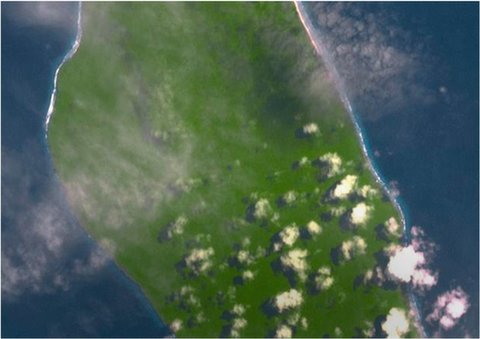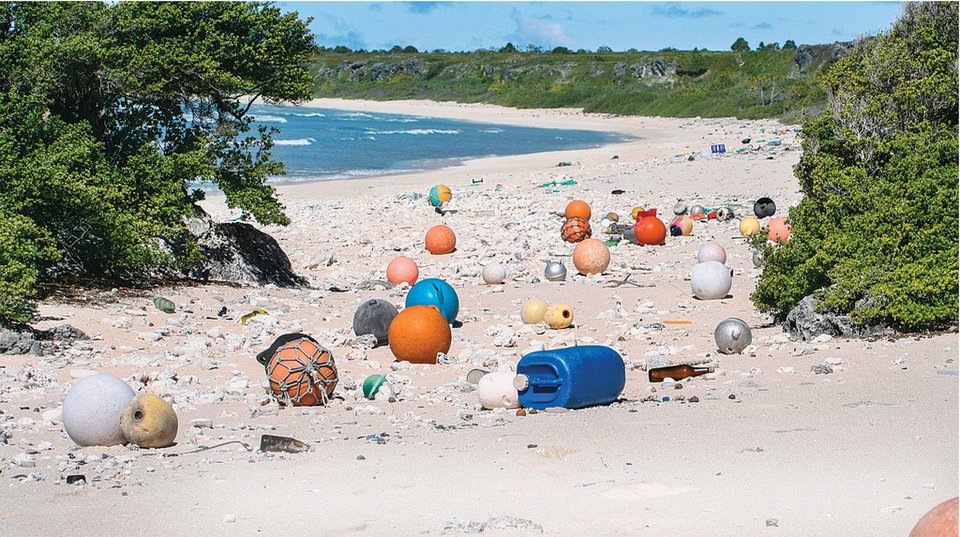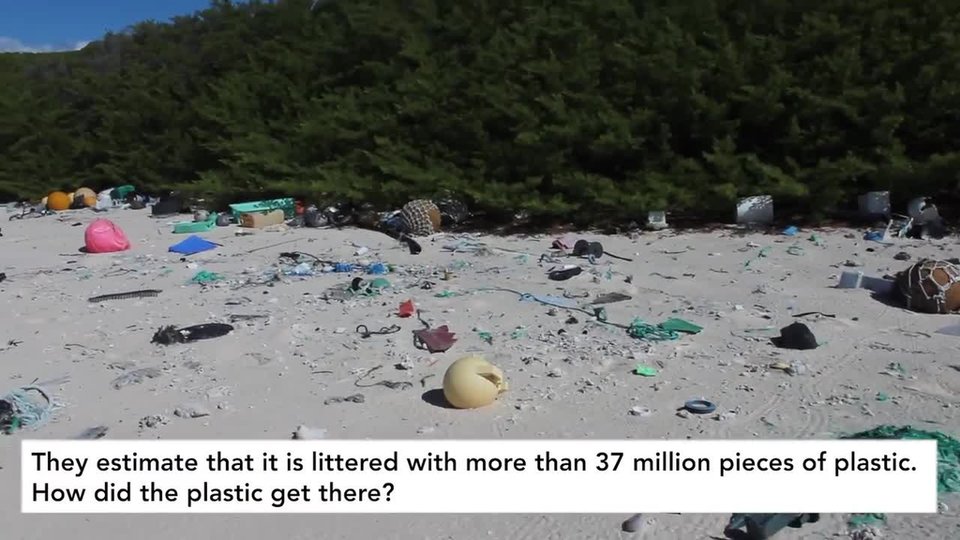Plastic Pollution
Imagineifplastichadbeeninventedwhenthepilgrimssailed toNorthAmerica.WhatiftheMayflower hadbeenfilledwithplastic‑wrappedsnacks?Thetrashwouldprobablystillbehere,fourcenturies later.
Plasticwasinventedinthelate19thcentury.Itsmassproductionstartedin1950.Inonly70years,wehaveproducedawhopping9.2 billiontonsofplastic.Ofthat,morethan6.9billiontonshavebecomewaste.And,ofthatwaste,6.3 billiontonswerenever recycled.

Isthisaflorist’sshopfilledwithflowers?Lookagain.Theseplantsareallmadefrom plastic.
Nooneknowshowmuchplasticendsupintheocean.Butoneprofessor guessed.
ProfessorJennaJambeckcalculatedthatbetween5.3and14 milliontonsofplasticendupintheoceaneachyear.Williteverbiodegrade, orbreakdown?Maybe.Maybe not.
Plastichastransformedourlivesinmanyways.Iteasedtravelintospace.Itchangedmedicine.Itextendedthelifeoffood.Plasticevensavedwildlife. Inthemid‑1800s,elephantivorywasusedtomakecombsandothertrinkets.Ivorybecamescarce.Acompanyofferedarewardtowhoevercouldcreateanalternative.InventorJohnWesleyHyattcreatedamaterialfromasubstancefoundinplants.Itbecameknownas plastic.
HendersonIsland’sShame
HendersonIslandisatinyisland.ItsitsinthemiddleofthePacificOcean.Noonelivesthere.AnditishalfthesizeofManhattan.Yetmorethan19tonsoftrashlitteritsbeaches,mostofit plastic.
Researchersestimatethatithasthegreatestamountofdebrisforitssizeofanyplaceintheworld.Theythinkithasmorethan37 millionpiecesoftrash.Foreverysquaremeteryouwalk,you’llfindabout672piecesoftrash.Foreachpieceofdebrisyouseeonthebeach,twopiecesareburiedinthesand.HowdoessomuchtrashwashashoreonHenderson Island?
TrashbobsacrosstheseasuntilitgetssweptintotheSouthPacificgyre.Thegyreisacircularoceancurrent.Itfunctionslikeaconveyorbelt.Thegyrecollectsplastictrash.ThenitsendsittoHenderson’s shores.

HendersonIslandisoneoftheworld'smostfar awayplaces.Itisalsooneofitsmost polluted.

Henderson Island
anuninhabitedislandprizedforits animal diversity
Asia
Australia
NorthAmerica
SouthAmerica
PacificOcean
HendersonIsland
Morethan37millionpiecesofplasticonthe island.

